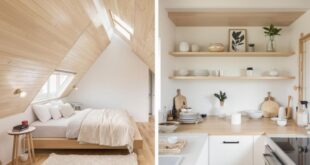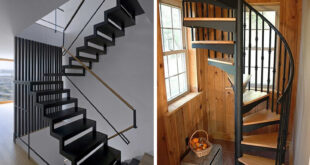
The Allure of the Minimalist Home: Creating Serenity Through Simplicity
In an increasingly chaotic world, the concept of a minimalist home offers a sanctuary of calm and order. More than just a design trend, minimalism is a conscious choice to live with less, focusing on what truly adds value to your life. This article explores the philosophy behind the minimalist home, its benefits, practical tips for achieving it, and addresses common misconceptions.
Understanding the Minimalist Philosophy
At its core, minimalism is about intentionality. It’s about decluttering not just your physical space, but also your mental space. A minimalist home isn’t about stark white walls and empty rooms; it’s about creating a space that is functional, beautiful, and reflects your personal values. It’s about owning fewer possessions, but owning things that are high-quality, durable, and meaningful.
The rise of the minimalist home can be attributed to several factors, including growing environmental awareness, a desire to escape consumerism, and a yearning for a simpler, less stressful lifestyle. As people become more conscious of the impact of their consumption habits, they are increasingly drawn to the principles of minimalism.
Benefits of Embracing a Minimalist Home
The advantages of adopting a minimalist lifestyle and creating a minimalist home are numerous and far-reaching:
- Reduced Stress and Anxiety: A cluttered environment can contribute to stress and anxiety. A minimalist home, with its clean lines and open spaces, promotes a sense of calm and order.
- Increased Productivity: When your surroundings are free of distractions, you can focus more easily on the tasks at hand. A minimalist home can enhance productivity and creativity.
- Greater Financial Freedom: By consciously consuming less, you save money and reduce debt. This financial freedom allows you to pursue your passions and invest in experiences rather than material possessions.
- More Time for What Matters: Less time spent cleaning, organizing, and managing possessions translates into more time for activities you enjoy, such as spending time with loved ones, pursuing hobbies, or traveling.
- Environmental Sustainability: Minimalism encourages mindful consumption, reducing waste and minimizing your environmental footprint. Choosing durable, eco-friendly products is a key aspect of creating a minimalist home.
- Enhanced Aesthetics: A well-designed minimalist home is often visually appealing, with a focus on natural light, clean lines, and carefully curated pieces.
Designing Your Minimalist Home: Practical Tips
Creating a minimalist home is a journey, not a destination. It’s about gradually decluttering, simplifying, and creating a space that reflects your values. Here are some practical tips to guide you:
Start with Decluttering
The first step is to declutter your existing space. Go through each room and identify items you no longer need, use, or love. Be honest with yourself and let go of anything that doesn’t serve a purpose or bring you joy. Consider donating, selling, or recycling unwanted items. A good rule of thumb is the 80/20 rule: you probably use 20% of your belongings 80% of the time.
Focus on Functionality
When choosing furniture and decor, prioritize functionality over excess. Opt for pieces that serve multiple purposes or that can be easily stored away when not in use. Consider investing in high-quality, durable items that will last for years to come. A minimalist home embraces quality over quantity.
Embrace Neutral Colors and Natural Light
Neutral color palettes create a sense of calm and spaciousness. Use light, airy colors like white, beige, and gray to create a backdrop that is both versatile and visually appealing. Maximize natural light by keeping windows clear and using light-colored window treatments. Natural light significantly enhances the feeling of openness in a minimalist home.
Choose Minimalist Decor
Decorate with intention, selecting a few key pieces that add personality and visual interest without overwhelming the space. Consider incorporating natural elements like plants, wood, and stone to bring warmth and texture to your minimalist home. Avoid cluttering surfaces with unnecessary items.
Storage Solutions are Key
Effective storage solutions are essential for maintaining a minimalist home. Invest in storage containers, shelving units, and furniture with built-in storage to keep clutter out of sight. Utilize vertical space to maximize storage capacity. Consider a capsule wardrobe to further minimize clutter.
Create Designated Zones
Define specific zones for different activities, such as a reading nook, a workspace, or a relaxation area. This helps to create a sense of order and purpose within your minimalist home. Each zone should be clearly defined and free of clutter.
Practice Mindful Consumption
Before making a purchase, ask yourself if you truly need the item and if it aligns with your values. Avoid impulse buying and focus on acquiring items that are durable, sustainable, and meaningful. Practicing mindful consumption is a cornerstone of the minimalist home lifestyle.
Addressing Common Misconceptions About Minimalist Homes
There are several common misconceptions about minimalist home design:
- Minimalism is about being boring: This isn’t true. A minimalist home can be full of personality and style. It’s about curating a space that reflects your unique taste and values, not adhering to a strict, sterile aesthetic.
- Minimalism is only for wealthy people: Minimalism can be adapted to any budget. In fact, it can save you money by encouraging you to buy less.
- Minimalism means getting rid of everything: Minimalism is about keeping what you need and love, not about living with nothing. It’s about being intentional with your possessions.
- Minimalism is a trend: While minimalism is a popular trend right now, it’s also a timeless philosophy that can improve your life in many ways.
The Future of Minimalist Living
As people continue to seek simpler, more sustainable lifestyles, the appeal of the minimalist home is likely to grow. The principles of minimalism can be applied to all aspects of life, from your home to your career to your relationships. By embracing a minimalist mindset, you can create a life that is more meaningful, fulfilling, and aligned with your values.
Furthermore, the integration of smart home technology can complement the minimalist aesthetic. Streamlining systems and reducing the need for multiple devices can further declutter the home while enhancing functionality. [See also: Smart Home Integration for Minimalists]
Conclusion: Embracing the Simplicity of a Minimalist Home
The minimalist home is more than just a design style; it’s a philosophy that promotes intentionality, simplicity, and mindful living. By decluttering your space, focusing on functionality, and embracing a minimalist mindset, you can create a home that is both beautiful and beneficial to your well-being. Embrace the allure of the minimalist home and discover the serenity that comes with living with less.
 Nimila
Nimila




